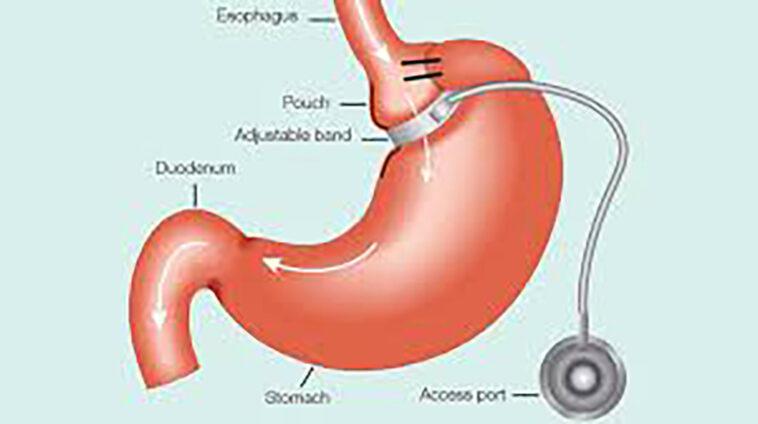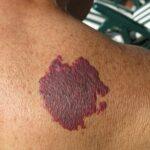Introduction
In some people, weight gain becomes a disease that affects the quality of life of those who suffer from it, in that case the patient and the doctor can reach certain consensuses to achieve weight loss under healthy and safe parameters where the quality of life and the health of the patient improves, one of these possible treatments for obesity is the gastric band .
After various analyzes and examinations, if you have decided with your doctor that restrictive surgery may be the option to lose weight and improve your health, the gastric band is one of the many possible treatments and in most cases accompanied by a healthy diet .
What is the gastric band?
The gastroplasty endoscopic sleeve is a surgery that involves the installation of an adjustable silicone ring around the top of the stomach , this creates a small pouch where the food is deposited. The band or ring will limit the amount of food that can be consumed, providing a feeling of fullness to the patient after eating certain amounts of food.
This operation is recommended for people who are overweight who are above the average and allows a progressive but constant weight loss after some time after the surgery. After surgical treatment, the doctor can adjust the band to make food pass more slowly or quickly through the stomach, and it can even be removed if the patient so wishes.
Related other methods within treatments for obesity such as the gastric balloon , the sleeve gastrectomy , bariatric surgery, gastric bypass or POSE method .
Who is it suitable for?
Generally, gastric banding patients are those who cannot lose a large amount of weight in the long term through diet and lifestyle change programs , or who have serious health problems caused by obesity.
Doctors often use body mass index (BMI) to determine your eligibility, the recommended that this surgical treatment is only applicable “for people with body mass index (BMI) of 30 kg / m2 or higher, or 28 kg / m2 with associated pathologies (type II diabetes, hypertension, osteoarthritis of the knees …). ” It is not usually recommended in cases of morbid obesity.
Being a minimally invasive and reversible procedure that helps to lose weight and maintain it, the patient can request it himself, but it is really the bariatric surgeon who after certain analyzes concludes which procedure is the best course of action for the needs and objectives individual patient.
How do I choose the surgeon?
To choose the surgeon to perform this type of procedure, the first thing the patient should do is learn about the procedure itself , investigate the pros and cons for himself, point out any questions that arise in his research so that when the time comes to go to the different clinics have a minimum knowledge about the surgery.
After this previous investigation, the respective clinics that perform this treatment should be sought, it is recommended to inquire in more than one clinic, since it is very important that the patient feels calm and safe with the procedure and the professional who is going to perform it. Based on this, the number of specialized procedures that the clinic performs must be analyzed, verifying that the medical professional has the mandatory degrees and that it is in a company endorsed in the country, preferably in the specialty of the operation, in this case SECO , the Spanish Society for the Surgery of Obesity.
After the surgeon or specialist complies with these conditions, the patient must speak and solve any type of doubt that may arise, analyze the patient-doctor relationship, and where possible, seek testimonials from patients already operated. Although no surgical procedure is the same in every patient, this can give an idea of what the end result will be.
How is the first consultation?
In the first consultation depending on the clinical and medical professional, s and perform a basic protocol analysis of the patient which will be determined by tests and studies whether the patient is suitable or not to undergo the surgical procedure of gastric banding.
In the event that the patient is suitable for the procedure, a series of evaluations will be carried out to assess their health, secondary causes will be ruled out and the pre and postoperative process will be explained in detail.
This is the ideal time for the patient to resolve all their doubts and it is even recommended to ask the medical professional for testimonials from people who have undergone the same procedure or who have a similar medical history.
In addition to the routine and mandatory evaluations for any type of invasive surgery, some clinics perform a psychological analysis to measure the commitment and compliance with the restrictions that the surgery entails.
Preparation for the intervention
In preparing for any weight loss surgery, the patient must commit to the dietary and lifestyle changes necessary for the success of the procedure. Since it is clear in itself that the surgical treatment will help the person reach their goal on the scale, it is necessary for them to start implementing changes before their surgery so that everything reaches the expected term.
- Tell your surgeon about any medications you are taking or planning to take during recovery. Some components of these drugs may interact inappropriately with your postoperative medications, as is the case with some contraceptives.
- Follow the diet that your medical professional recommends before surgery.
- You may need to stop smoking for at least 30 days before and after surgery. Smoking can increase the risk of complications, it can also affect the healing of incisions and increase the risk of infection.
- Do not drink any type of alcoholic beverage for at least 48 hours before surgery.
In addition to these logical recommendations, it is important to verify that all the proper analyzes have been carried out and that the patient has been seen by a surgical professional and an anesthesiologist.
How is the lap band procedure performed?
The tells us that the operation is performed “laparoscopic a t ECHNICAL minimally invasive without scar that permits viewing of the abdominal cavity with the help of an optical lens. Through an optical fiber, on the one hand, light is transmitted to illuminate the cavity, while the images of the interior are observed with a camera connected to the same lens, placing the band just below the esophagus-gastric junction ”.
The procedure often takes from an hour to an hour and a half, and is generally performed under general anesthesia, it is a minimally invasive surgical treatment as it is done through small incisions in the abdomen and a laparoscopy.
The device is first placed around the upper part of the stomach, and the tube attached to the band is accessible through a channel under the skin of the abdomen. Using this channel, the surgeon injects saline into the band to manipulate it.
Adjustments are made to alter the degree of constriction around the stomach. The band creates a small stomach pouch above it, with the rest of the stomach below.
The smaller stomach pouch reduces the amount of food that can be held in the stomach at any one time . The result is a greater feeling of fullness after eating less food.




GIPHY App Key not set. Please check settings